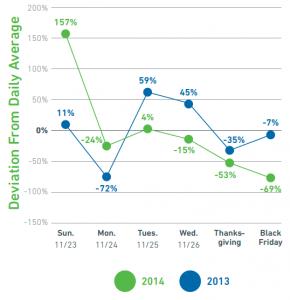— March 6, 2019
Effective onboarding is an overlooked art form. Think about the times you’ve started a new job in the past. More than likely, you’ll have sat down with HR to go over some dry procedural stuff. Then maybe your new team leader pointed out the fire exits, introduced your coworkers and showed you to your desk.
Sounds familiar, right? This is an organisation treating onboarding as formality. Or, if you prefer, as a chore. Something that doesn’t really matter. Think back to that first day again. This approach probably put a bit of a dampener on your excitement at starting your new job.
Of course, none of this to say that a lack of good onboarding should be setting off alarm bells. It’s not that this new employer doesn’t care. More likely, they simply don’t realise how important an effective onboarding strategy is.
Onboarding isn’t just for the benefit of the new employee either. In fact, it saves a lot of problems down the line across all sorts of verticals. With that in mind, let’s take a look at how you can absolutely nail your onboarding process.
Why Should I Care?
Consider this. Small and medium business are finding it increasingly difficult to attract talent. Plus, workers today are more likely to job hop than any previous generation. So, chance are you’re already struggling to find and keep the right people.
Now that you’ve gone to all the effort of finding the perfect employee and getting them through the door, you’re going to want to hang on to them as long as you can. Onboarding is no time to be complacent. Instead, it’s a time to continue shouting about all of the great things your company can offer.
Add to this the fact that every manager or HR professional worth their salt knows the importance of building and maintaining a cohesive team. You go to all sorts of lengths to foster this. The open plan office, the daily stand-ups, the paint-balling weekend.
So it doesn’t make much sense to ditch your new recruit at their desk and let them fend for themselves. That’s a sure fire way to destroy your long cultivated ‘we’ feeling.
Of course, part of the reason you’ve hired this person is that you think they’ll suit your company culture. All the same, don’t be afraid to spend a bit of time on the small stuff with them. Point out the in-house excel whizz. Jump in and explain the impenetrable in-jokes.
So now we know why onboarding is so important. Let’s drill down into how to actually do it properly.
The First Impression
Depending on your hiring process, the start of onboarding probably isn’t actually the first time you’ve met your new employee. The difference is that throughout the hiring process, you were both weighing each other up. Now you’ve both made your decision.
This first impression operates on two levels. Firstly, you’re making an impression on behalf of the organisation as a whole. As such, the key here is to communicate to the new hire that the organisation values its employees.
There are several tangible ways that you can do this, which require almost no effort. Not keeping them waiting for an hour in the lobby. Being prepared. Dedicating more than fifteen minutes to your initial meeting. If this sounds too obvious to say, then you’ve obviously been very lucky with your previous employers and I congratulate you for that.
What’s even more important for team leaders and HR professionals is creating a good first impression on a personal level. Your job is to provide your new hire with everything they need to succeed in their new role. That means that they need to have enough trust and regard for you to raise their head if they need help.
A shocking number of workers don’t report problems even when it’s a matter of health and safety, so there really isn’t enough you can do to start building healthy and open relationships from day one.
The Boring Part
Now it’s time to start going over company policies and procedures. Who knows, maybe you can make this fun. This boils down to explaining to employees what the company expects, and what happens if something isn’t going to plan.
Quick aside, you’re still trying to create a good impression, so best not to come across too punitive. Make sure when you’re explaining disciplinary procedures you’re talking strictly hypothetically and avoid using the new employee themselves as an example.
Even better, emphasise your role as an advocate for the employee. Obviously this can be done without insinuating that they’re likely to have problems with their new colleagues. Instead, emphasise all the structures that are in place make their life easy, whether it’s flexible hours for medical appointments or a streamlined system for booking holidays.

Free-Photos / Pixabay
The Fun Part
Now, time to wake them up and start going over the details of all the perks and benefits you can offer. The headlines will have already been communicated during the hiring process. They’ll have a broad idea of whether they can get healthcare or a cycle-to-work scheme for instance.
Now it’s time to get into the nitty gritty. You don’t want to spoil the party, but it is important to set clear expectations. This includes things like eligibility criteria based on KPIs and when certain benefits will kick in or expire.
Spend a bit of time showing them around your self-service system too. You’ve spent time and money securing these benefits for your team, make sure they actually know how to access them. On a selfish level, this will also save you having to explain this a hundred times a week to various employees.
Next, it’s time to meet the rest of the team. You’ll have to use a bit of judgment for how to go about this. If your new hire is a bit of an introvert, don’t ask them to stand up in front of 200 of their new coworkers and introduce themselves. Equally, don’t make them spend the full day talking to literally everyone. They’ll get to know each other in time one way or another.
Beyond the First Day
Let’s think back to your previous first days again. How many times has the HR manager disappeared after your first morning and not appeared again until your exit interview? This is something of a stereotype, but there’s no smoke without fire, as they say.
I’m sure you’re very busy, but please remember that onboarding doesn’t end at five o’clock on the first day. Think of it as more of a procedure than a task and you’ll be headed in the right direction. When it will end will depend on the individual company and employee, but it’ll be a timescale measured in weeks or even months, not days or hours.
Have a clear time table of check-in scheduled in advance. and communicate this to new hires. In larger organisations, assigning an experience buddy is a popular tool to assist with long-term onboarding, particularly in more technical roles.
Final Thoughts
Now, this is only a cursory guide to the art of onboarding. Of course, there is a lot more to say. In fact, some people build their entire job role around this one area of HR. It’d be naive to think anyone could condense all this tacit knowledge into a single article.
Instead, if you go away today with nothing other than a newfound understanding of why onboarding actually matters, I’d be satisfied that I’ve made the world a tiny little bit better.
I’ve covered the basics for you too. But by all means, keep reading up on the subject. For a more detailed look at some of the techniques you can use, check out this tremendous resource. Like any skill though, you’ll never stop learning about onboarding, so be sure to keep reading around on the subject and you’ll never stop improving.
Business & Finance Articles on Business 2 Community
(43)







